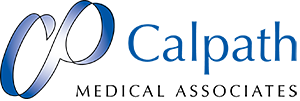Sputum specimens are collected for culture, cytologic examination or both tests. It is better to submit separate specimens if both culture and cytologic examination are desired.
Culture tests are ordered to determine the cause of lung infection. Cytologic examination is requested primarily to screen for malignancy.
Specimen Collection for Routine Culture
- Specimens for routine culture should be collected in a sterile, screw-top plastic container.
- Collect the specimen in the morning, after the patient has brushed his/her teeth to avoid contamination of the specimen with food particles. It is not necessary to collect the specimen immediately after waking.
- Encourage the patient to take deep breaths and then cough up material from deep in the lungs.
- Sputum should be thick and mucoid, and may be white, yellow or green. (In contrast, saliva is clear and watery and is not suitable as a specimen).
- Do not add any fixative to the specimen.
- Arrange for the specimen to be delivered to the laboratory promptly.
- Keep the specimen at room temperature.
Specimen Collection for Mycobacteria (AFB)
- Collect the specimen immediately after the patient wakes in the morning because this gives the highest yield of acid-fast organisms.
- Encourage the patient to take deep breaths and cough up the specimen from deep in the lungs. Repeat this step a few times so that the specimen is procured from multiple coughs. Saliva is not suitable.
- The specimen should be thick and mucoid, and either white, yellow or green. Flecks of blood may be present.
- Collect the specimen in a sterile, screw-top plastic container.
- Do not add any fixative.
- Send the specimen to the laboratory promptly.
- At least three specimens should be sent to the laboratory, each collected on a different day.
- Keep the specimen at room temperature.
Specimen Collection for Cytology
- Sputum specimens for cytology should be collected early in the day to ensure that the specimen reaches the laboratory early enough to be processed that day.
- Do not collect the specimen immediately after the patient wakes (the cells have been collecting in the bronchial tree overnight and will not be well preserved). Discard the first morning cough specimen. Have the patient clean his/her mouth to remove any food particles.
- Have the patient take deep breaths and then produce a specimen from deep in the lungs. Repeat this step a few times to procure the specimen from multiple coughs. Collect the specimen in a clean plastic specimen container. The container does not have to be sterile.
- The specimen should be thick and mucoid, and of variable color. Flecks of blood may be present. (Saliva is clear and watery, and not suitable for cytologic examination).
- Do not add any fixative to the specimen.
- Keep the specimen at room temperature.
- Send the specimen to the laboratory promptly.
- Submit three specimens, each collected on a separate day (the yield of malignancy is increased when multiple specimens are examined).
- Complete the Calpath cytology requisition form per the instructions.
After collecting the specimen, please do the following:
- Place the specimen in the Calpath specimen bag.
- Place the requisition form in the side slot of the Calpath specimen bag.
- Call Calpath for a pickup or place the Calpath specimen bag in the location where our courier usually picks up your daily specimens.
